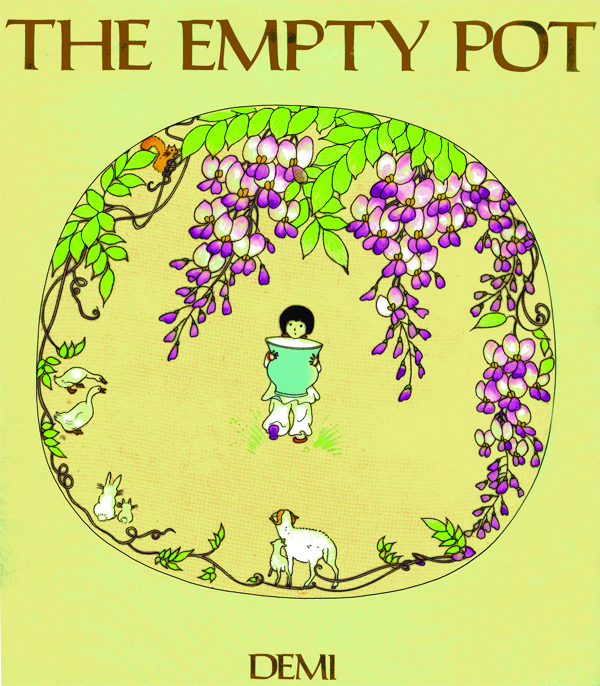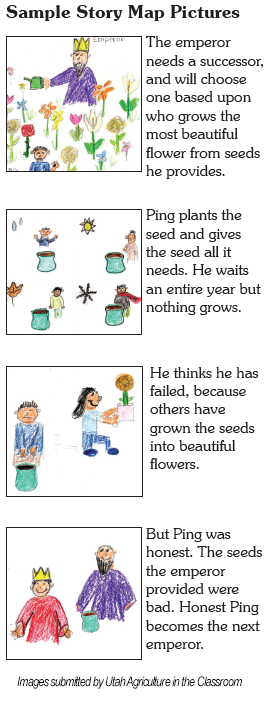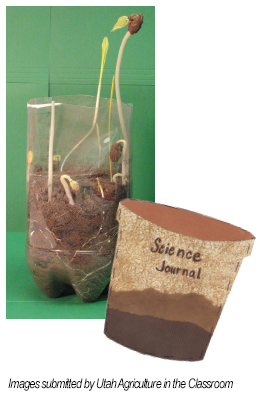The story of The Empty Pot is a folktale. A folktale is a traditional story that is passed on by word of mouth and is modified by successive retelling before being written down or recorded. The Empty Pot revolves around an Emperor of China and his love for plants, especially flowers. He has a beautiful garden and carefully tends to the needs of the plants. As the Emperor grows older, he decides that he needs to choose an heir. The Emperor gives seeds to the children of his kingdom and tells them that the one who brings back the most beautiful flower will be named as his heir. Only one boy is chosen, not because of his beautiful flower but because of his honesty.
The Emperor tended to his garden very carefully, so he must have understood the needs of plants and seeds. The children of the kingdom also knew how to plant seeds so that they would grow into beautiful flowers. Understanding seeds enables us to grow not only pretty flowers but also food to eat. Fruits, vegetables, and grains are all plants that farmers grow. Even meat and dairy foods cannot be produced without growing plants. The livestock that produce meat and dairy need plants to eat.
Seeds are well equipped to survive and sprout into healthy plants. The outer part of the seed, or seed coat, protects the inner plant embryo, which will become the new plant. To sprout and grow, a seed needs moisture (water) and an optimum temperature (some seeds germinate better at warmer temperatures, and others at cooler temperatures). The seed’s cotyledons or endosperm contain the necessary energy for the seed to grow until the first true leaves appear and the plant can begin to make its own food through photosynthesis. As the plant continues to grow, it will need a steady supply of water, minerals (from the soil or from fertilizers), light, and air. Just like seeds, growing plants also do best with optimum temperatures (some like it hot—eggplant, tomatoes, cucumbers; some like it cool—peas, lettuce, spinach).
Soil and water are among our most valuable natural resources. Water carries nutrients to plant roots and transports nutrients from the roots to the stems and leaves where they are used in the plant. Too much water can make plants susceptible to disease and even drown them (plant roots need air too!), but too little water will make plants stunted, and without any water plants will die.
Soil provides plants with support and protection for their roots as well as the nutrients that they need to grow. Organic matter is a key component of healthy soil, helping the soil absorb and hold water for plants to use and releasing nutrients as it decomposes. Organic matter is made up of decomposed and decomposing material that was once alive (fallen leaves, animal waste, etc.). Plants and animals are important to soil, just as soil is important to plants and animals. Potting soil that you buy at the store is mostly organic matter. It is much lighter than the soil in your garden or your yard, which has a large mineral component. The mineral component of soil comes from rocks that have weathered into small particles of sand, silt, and clay. While organic matter was once living, the mineral component of soil is nonliving.
The germination of a seed is a fascinating process to watch, and students of all ages enjoy planting, observing, and caring for plants as they grow and become beautiful flowers, fruits, vegetables, shrubs, and trees.
 Prior to starting the activities for this lesson, introduce the students to the story of The Empty Pot. Hold up the book and activate prior knowledge by asking the students to describe what they see on the cover. Discuss the artwork, the concept of a folktale, the depiction of the boy on the cover, and some general cultural aspects of China.
Prior to starting the activities for this lesson, introduce the students to the story of The Empty Pot. Hold up the book and activate prior knowledge by asking the students to describe what they see on the cover. Discuss the artwork, the concept of a folktale, the depiction of the boy on the cover, and some general cultural aspects of China. Discuss the setting, main characters, and problem presented in the story and chart the sequence of events. You may wish to use the
Discuss the setting, main characters, and problem presented in the story and chart the sequence of events. You may wish to use the  After the experiment is completed, review with the students the things needed for plant growth:
After the experiment is completed, review with the students the things needed for plant growth: